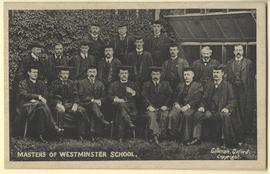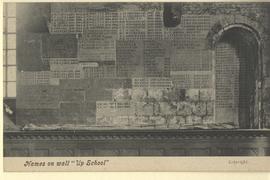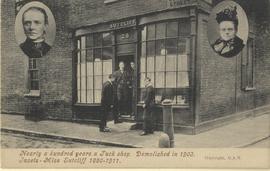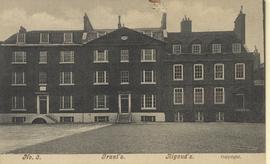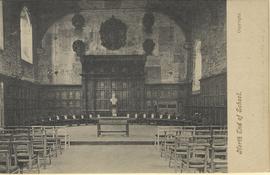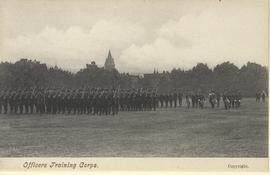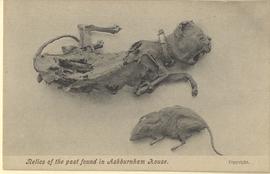- GB 2014 WS-02-POS-01-02
- Item
- c.1911
One copy annotated on reverse as follows:
"Memories of Masters, 1918-1924 (R.S.C.)
For Group, see ‘Record of O.WW’, Vol. III. Date given ‘c.1909’. As group includes H.L. Reed (sic) but not Q.T. Willett (Play 1909) date is presumably Election 1908 or 1909. (NB: - Photo by Gillmans, Oxford, not by Jn. Brown. Groups not his strongpoints.)
L. to r: -
Liddell; Burrell (‘BaaLamb’); Reed //
Etheridge, Tyson (‘Ti Ti’), Bursar; Day; Hardy (‘Basil’); Wootton; Forbes; Mitchell (‘Mike’); Smedley (‘Snappers’)//
(Seated) Nall (‘Hoty’); Sargeaunt (‘J.S.’); Tanner (‘The Buck’); Dr. Gow (‘Jimmy’), HM; Fox (‘The Old Man’); Raynor (‘Peewee’); Huckwell (‘Bill’).
Ten had been on the Staff since Rutherford’s day. Except for the four youngest (marked*) all were still there when the War ended in Play 1918, my first term! Probably an unparalleled record of group service.
Under leadership of Dr. Gow, a magnificent team-particularly on Classical side. All devoted to the School, each a master of his subject, each (save one (above: B.F.H)) a striking individual character. Between IV and VII I sat under most and remember all with gratitude, respect and (with one exception) affection."
Second copy addressed and sent, with stamp affixed. Individuals annotated on front. Sent to "Miss M. Chalk, Kentisbeare Rectory, Cullompton, Devon". The correspondence reads as follows:
"Rigaud's House 11/2/19
Dear Mary,
Your cake is very much liked and admired. I am sending this Post-Card as a reward. I saw the King open Parliament today. I saw him and the Queen twice. There were a lot of soldiers there. Has there been enough ice to skate on in Devonshire? Several people have been doing it in London
Dick"
"

